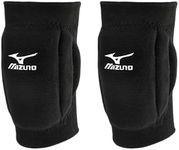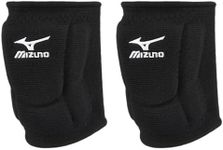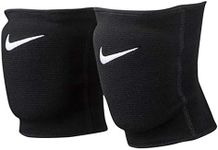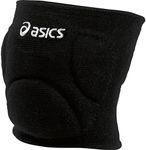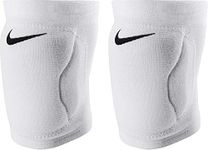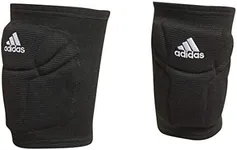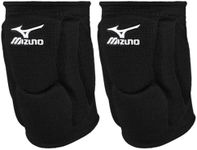Buying Guide for the Best Volleyball Knee Pads
Choosing the right volleyball knee pads is important for both comfort and protection during play. Knee pads help prevent injuries and bruises when diving or sliding on the court. The best knee pads for you will depend on your playing style, position, and personal comfort preferences. Understanding the key features will help you make a smart choice that keeps you safe and comfortable throughout your games.Padding ThicknessPadding thickness refers to how much cushioning is provided over the knee area. Thicker padding offers more protection, which is great for players who dive or slide frequently, such as liberos or defensive specialists. Thinner padding is lighter and less bulky, making it a good choice for players who value mobility and speed, like setters or outside hitters. To pick the right thickness, think about how often you hit the floor and how much protection you feel comfortable with. If you’re new or play defensively, thicker pads may be better, while experienced players who move a lot might prefer thinner ones.
Fit and SizeFit and size determine how well the knee pads stay in place and how comfortable they feel during movement. Knee pads that are too tight can restrict blood flow and cause discomfort, while those that are too loose may slip down during play. Most brands offer sizing charts based on knee circumference. To choose the right fit, measure your knee and compare it to the chart, and consider whether you prefer a snug or relaxed feel. Trying them on, if possible, is always helpful to ensure they don’t pinch or slide.
Material and BreathabilityThe material of the knee pads affects both comfort and durability. Common materials include cotton, polyester, and spandex blends, which offer stretch and softness. Breathable fabrics help keep your knees cool and dry by allowing air to circulate, which is especially important during long matches or in hot gyms. If you sweat a lot or play in warm conditions, look for knee pads with mesh panels or moisture-wicking fabrics. Durable materials are also important if you play frequently, as they will last longer and provide consistent protection.
Length and CoverageLength and coverage refer to how much of your knee and surrounding area the pad protects. Some knee pads are longer and cover more of the thigh and shin, offering extra protection for players who slide a lot. Shorter knee pads are lighter and less restrictive, which can be better for players who prioritize speed and agility. Consider your playing style and how much coverage you feel you need. If you often find yourself with scrapes above or below the knee, a longer pad might be best.
Flexibility and MobilityFlexibility and mobility describe how easily you can move your knee while wearing the pads. Some knee pads are designed with segmented padding or stretchy fabrics to allow for a full range of motion. This is important for players who need to jump, run, and change direction quickly. If you feel restricted or stiff in your knee pads, it can affect your performance. Look for knee pads that bend easily with your knee and don’t bunch up or limit your movement.


